History & Mythology
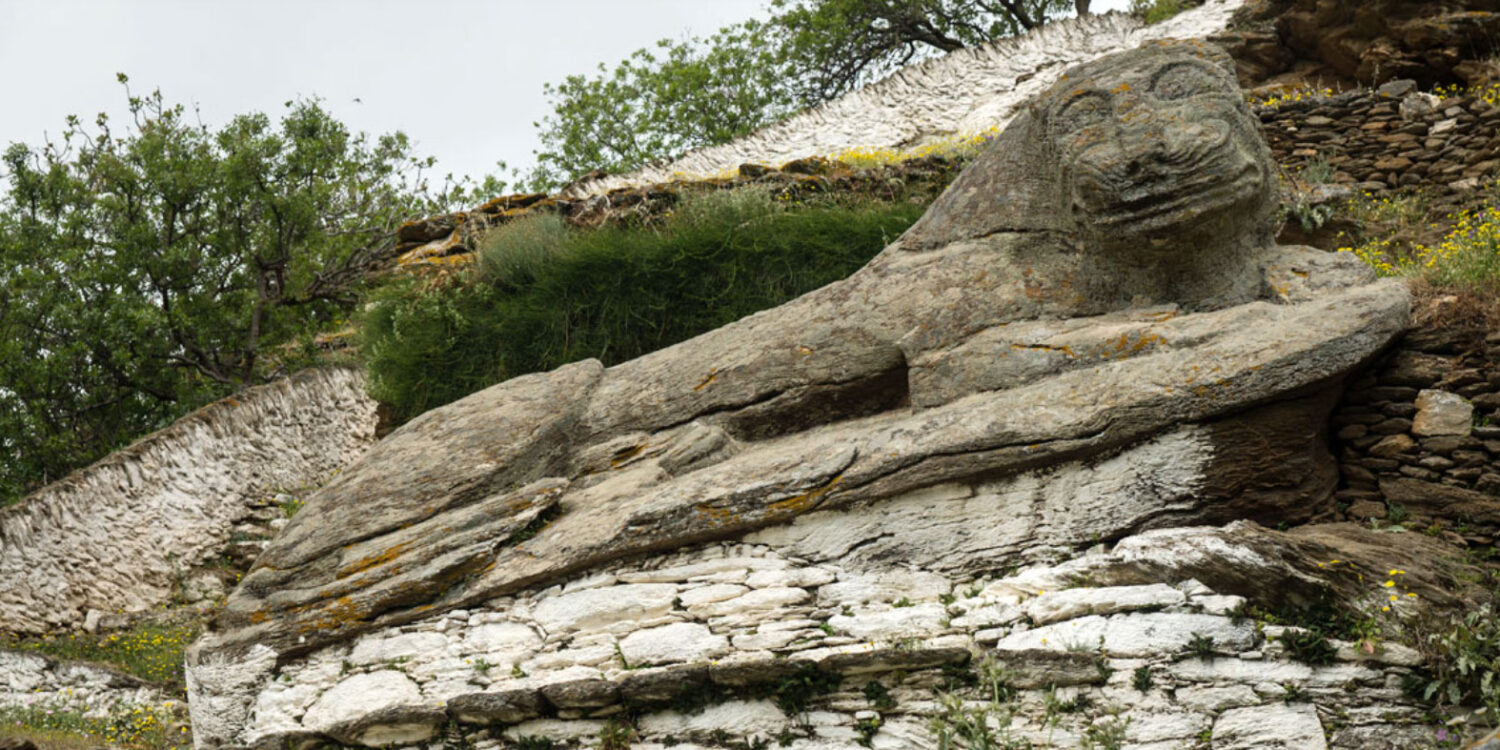
Mythology
The first name of the island is Hydroussa, a name signifying the water sources and thick vegetation where the Nymphs lived near the springs. According to the legend a fierce lion chassed the Nymphs and the island become dry and less fertile.
The brightest star of the celestial dome – Sirius – dominated Kea and a period of drought started. When people asked for help Apollo sent them his son the semi-god Aristaios, who offered sacrifices and won the gods’ appeasement. So the drought was limited and Zeus sent to Kea the north winds known as “meltemia” to freshen up the island for forty days every year.
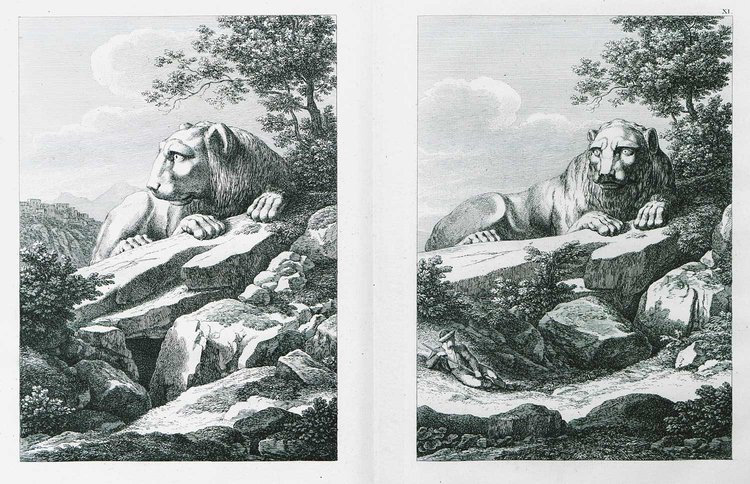
The actual name of Kea derives from the hero Keos, the leader of the first settlers of the island.
Prehistorical period
The earliest prehistoric settlement of Kea was located at the Cape Kefalas (3,300 BC) and was inhabited for a period of 100-150 years by 15 families, who lived by land cultivation, farming and fishing.
The Neolithic settlement of Agia Irini (3.200 BC) is one of the most important cultural centres of the Aegean, where buildings are identified dating back to 2700 BC.
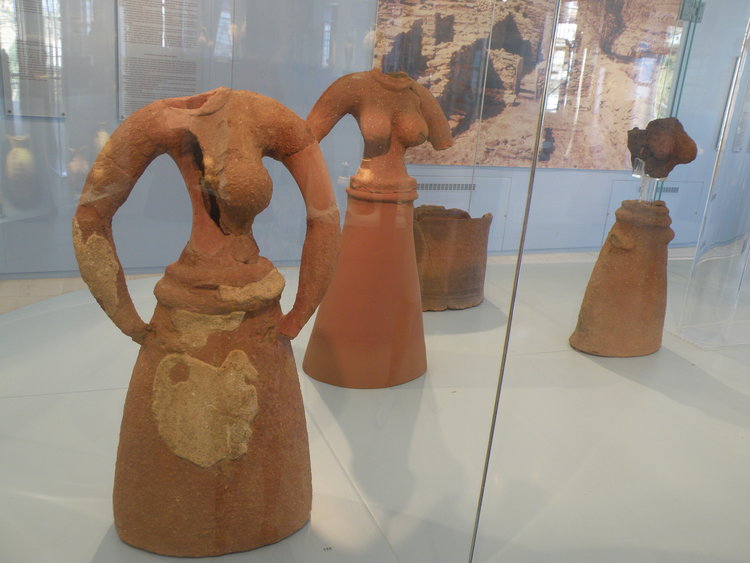
Since 1600 BC the settlement is blooming and its port become the crossroads of the Cretan-Mycenaean world, with paved streets, drainage system, two storey houses and warehouses until 1450 BC when is destroyed by earthquakes.
Archaic and Classical times
During the archaic period (7th-6th century), four independent economic and cultural cities – states are developed in Kea: Ioulis and the coastal Korissia, Poiiessa and Karthea. Each city is fortified, has its own currency with its own symbolism. There is a strong naval and trade-export activity of silver and copper towards the Cyclades and North Aegean Sea.
Kea reaches its peak during the classical times (5th – 4th century BC). Temples and theatres are being built and the arts are promoted. A characteristic work of this period is the enormous (6,10m) “Lion of Kea”.
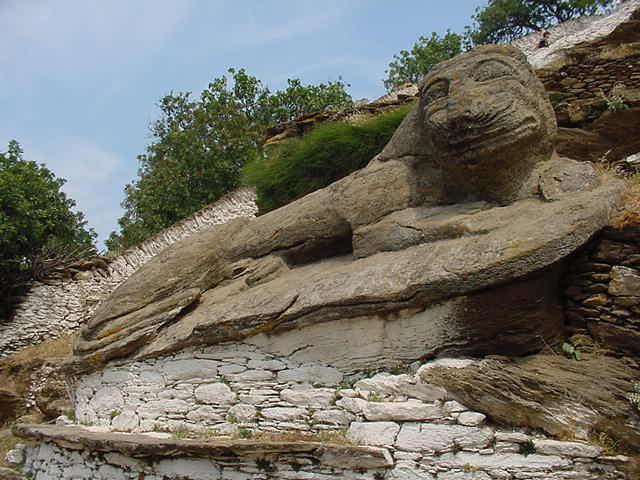
Famous personalities of kea gave their mark in the field of letters and sciences:
- Aristides, bettered the law infrastructure. To him is also attributed the “Keion Nomimon”, a unique custom of the voluntary and festive suicide of the elderly with a hemlock after their 60th birthday. The custom declares self-sufficiency, pride in the face of death and deep sense of duty and responsibility. The custom survived until the end of roman times.
- Simonides was a poet of victory songs famous for his epigrams in the Battle of Thermopylae: “Go tell the Spartans, passer-by, that here obedient to their word, we lie” and in Marathon: “Champions of the Hellenes, the Athenians at Marathon scattered the power of the gold-bearing Medes”.
- Pythokleidis, musician and sophist, founder of the Athenian music school.
- Bacchylides, choral poet, contemporary and rival of Pindaros.
- Theramenes, sophist of the 5th BC Century, he wrote books on the likeness of speech, images and formations.
- Xenomenides, historian of the 5th century BC, wrote traditions, myths and the history of Kea.
- Prodicus, sophist of the 5th century BC known for his parable of Hercules, who, at a crossroads, had to choose between the roads of good and evil.
Citizens of Kea were distinguished in ancient games and were glorified by the island’s poets. Each city has a separate administrative and political organization, with strong democratic elements. In 489 BC Kea is occupied by the Athenians and liberated by the Persian sovereignty it was under. Since then, the state of Kea participates in all the great battles of the time.
- n 480 BC In the battles of Artemision and Salamis against the Persians.
- In 479 BC. In the battle of Plataea.
- In 431-404 BC In the Peloponnesian war, on the side of the Athenians.
- In 338 BC Participate in the battle of Chaeronea, with the Athenians and their allies. The defeat of the Athenians in this battle marks the beginning of the Macedonian sovereignty.
Hellenistic, Roman and Byzantine times
At the beginning of the Hellenistic period, after the death of Alexander the Great (323 BC) Kea participates in the “Commonwealth of Islanders” founded by Antigonus A’ the One-Eyed and falls under Ptolemaic sovereignty in 288 BC.
In order to avoid the continuous pirate raids and looting, Kea is associated with the “Aitolian Commonwealth” federal state of continental Greece.
In the middle of the 2nd century, Roman Emperor Pompeius strikes a powerful blow to piracy, limiting its presence. In Karthea the imperial cult prevails, along with the cult of Pythian Apollo.
In spite of the negative conditions of the era (limited political autonomy, piracy, Roman expansionism) Kea maintains its high cultural level. In the 3rd century BC, two new famous personalities emerge from Ioulis, the philosopher Ariston and the surgeon-anatomical doctor Erasistratos.
In 42 BC Kea is granted along with other islands from Rome to Athens.
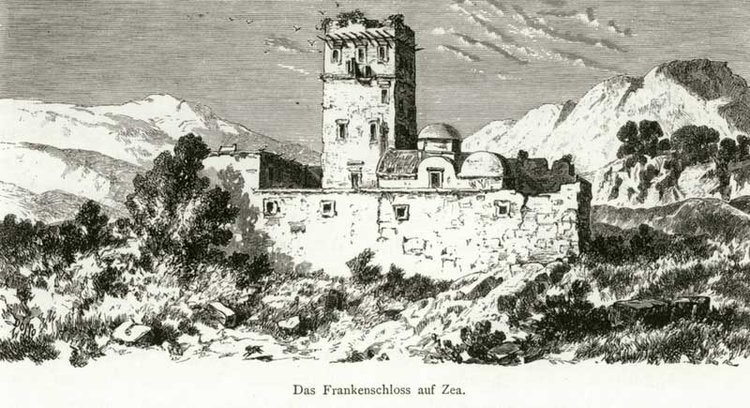
After the founding of the Byzantine Empire (330 AD) Kea falls under Province of Greece and from 843 AD on the Province of the Aegean Sea. Ancient Karthea is abandoned due to the increase in piracy and insecurity in the area and Ioulis remains the only urban centre on the island.
There is an increase in church building activity, by master builders, whose reputation exceeds the boundaries of the island.
Franks – Ottoman Empire
After the fall of Constantinople by the crusaders in 1204, Kea was conquered by the Franks in 1207. During the late years of the Byzantine Empire (1258-1453) Kea is successively recaptured by the Byzantines, the Venetians and the Franks. This situation and the ever-increasing piracy led the island to a population of only 200 inhabitants.
The name “Tzia” is of Latin origin that the island acquired during the Venetian domination.
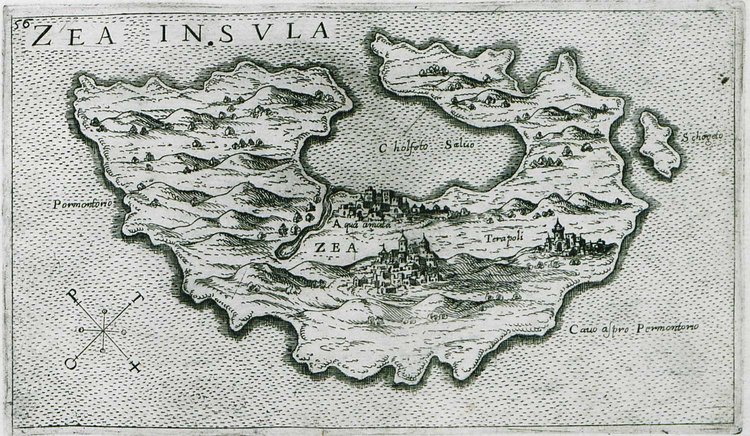
The islands residents become serfs and lose their individual rights.
After the Ottoman occupation of Constantinople (May 29, 1453), the Turkish administration encouraged the establishment of Albanian settlers who strengthened the shrunk population. The island’s community was governed by the elected foremen and two commissioners responsible for collecting the Ottoman taxes and ensuring discipline. The lords lived in Chora (Ioulis), while the people lived scattered in the countryside, with a relationship of dependence from their masters.
The granting of privileges by the Turks developed the self-government and the political role of the people. At least five monasteries flourish on the island, which numbers around 3,000 inhabitants by the end of the century. The crafts and trade are growing. Barley, black wine, and acorn, the most important exported product of Kea. There is also a significant increase in silk craft. The France – England competition at sea increases the importance of the harbour on the sea routes to Asia Minor and Constantinople. The population remains at around 3,000 inhabitants. Since the end of the 18th century there exists a school and a municipal library.
During the Russian sovereignty in the Cyclades (1770-1774), there was a large-scale pillaging of ancient monuments from the area of arthea, at the initiative of the Russian Admiral. Later – in 1811 – a Danish archaeologist and tomb-raider who carried out excavations in Karthea, pillaged a multitude of ancient finds.
Since 1780, on a steady economic rise and semi-autonomous status, Kea has embraced the idea of verthrowing the Ottoman yoke. Taxes were no longer accepted. Admiral Lambros Katsonis, uses the island as a naval base against the Turks (1789).
Modern history
The national spirit of the inhabitants of Kea is high. From 1817-18 the island supplies the resistance with men, confirming its reputation it had acquired from the Turkish conquerors as “island of the infidels”.
The archbishop of Kea blessed the beginning of the Revolution and the citizens supported the national cause.
In the constituted Greek state Kea is the headquarters of a province of islands. In 1828 the independence of Greece was officially declared and in 1835 the Municipality of Kea was founded with a population of about 5,000 inhabitants.
The traditional goods of the island (acorns, barley, wine, honey, dairy and meat) are being traded in great quantities since the second half of the 19th century.
In 1927, a factory of metallurgy and enamelled products was founded in Κorissia. It is the largest in this category in the Mediterranean, with a chimney of 45 m., characterized as a preserved monument since 1991.
The massive internal and external immigration of the 1960 absorbed a big part of the population, dramatically reducing it and leading the island to decline.
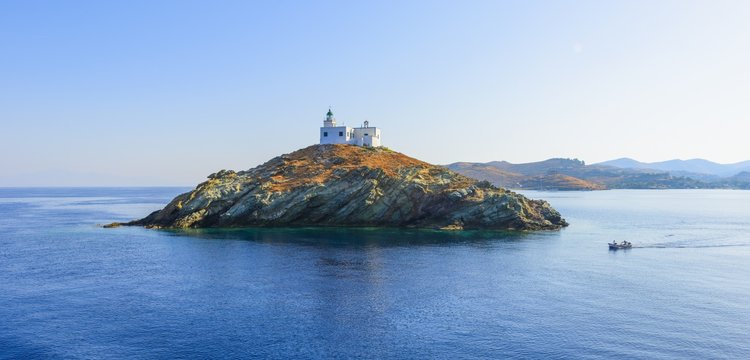
Today, Kea gradually regains its normal population standards due to land development and tourist activity. Its population is currently around 2,500 people.
